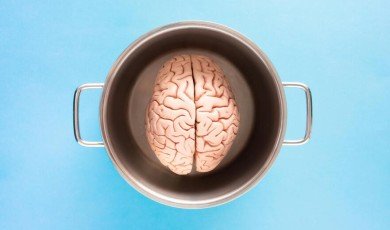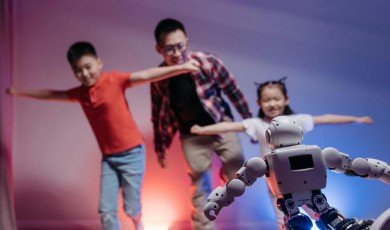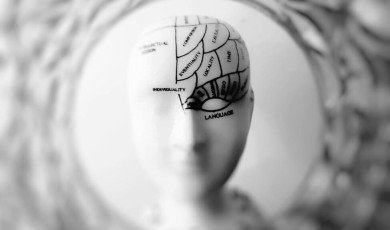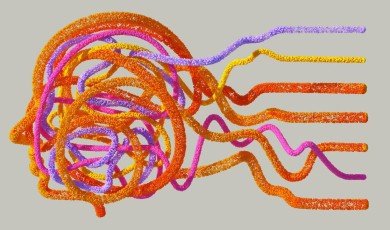
The human brain has fascinated scientists for centuries. With billions of neurons and trillions of connections, it is the ultimate model of efficiency, adaptability, and problem-solving. In recent decades, artificial intelligence (AI) has taken huge strides forward by borrowing principles from neuroscience, particularly the way neurons communicate in networks. This synergy between brain research and technology is not only reshaping how machines learn but also how humans understand themselves. The lessons learned from the brain go far beyond biology, they are shaping industries, driving innovation, and redefining the future of work.
Understanding the Brain’s Architecture
At the heart of the brain’s power lies the neuron, a specialized cell that transmits information through electrical and chemical signals. A single neuron might seem simple, but when billions of them interact, extraordinary things happen, thoughts, emotions, creativity, and memory all emerge from these networks. AI researchers found inspiration in this structure. Neural networks, the backbone of many AI models, are designed to mimic the way the brain processes information. Layers of artificial "neurons" receive inputs, transform them, and pass them along until the system can make a decision or prediction. This model has fueled breakthroughs in everything from voice recognition to autonomous vehicles.
From Synapses to Machine Learning
One of the most striking parallels between brains and AI is the concept of learning. In the human brain, learning occurs as connections between neurons strengthen or weaken, a phenomenon known as synaptic plasticity. Similarly, in AI, machine learning algorithms adjust the "weights" of connections in a neural network to improve performance. For example, when a child learns to recognize a dog, repeated exposure reinforces the brain’s pathways until recognition becomes effortless. In AI, a machine exposed to thousands of dog images eventually learns to identify one with impressive accuracy. This interplay highlights how much modern technology owes to centuries of brain research.
Why Neuroscience Matters for AI
AI has advanced far beyond simple tasks, but it still lags behind the human brain in flexibility and energy efficiency. By studying the brain, scientists aim to close this gap. For instance, while a supercomputer consumes massive amounts of energy to simulate brain activity, the human brain operates on the energy equivalent of a light bulb. Understanding these efficiencies could revolutionize machine learning, making it more sustainable and scalable. Moreover, brain-inspired AI isn’t just about speed. It’s about adaptability. The human brain can learn from very few examples, while machines still require enormous datasets. Insights into how the brain generalizes knowledge could make AI more robust and efficient.
Applications Beyond Technology
The impact of brain-inspired AI extends far beyond computer science. Businesses, healthcare providers, and educators are adopting AI systems shaped by neuroscience. For example, personalized learning platforms adjust content delivery based on how students absorb material, much like the brain adapts to individual experiences. In healthcare, AI powered by neural models can detect diseases in medical scans with astonishing accuracy.
Even industries you might not expect, like business translation services, are benefiting. AI language models, trained with architectures inspired by the brain, are making it faster and more affordable to translate complex texts across multiple languages. By understanding how humans process meaning and context, these systems are improving global communication and helping businesses expand across borders. This kind of expansion is not unlike beer brands entering EU, US, and Asian markets, where certified translation ensures legal and cultural alignment.
The Brain Inspiring Smarter Machines
AI is learning more than just recognition or translation, it is beginning to replicate aspects of human reasoning and creativity. Generative models, for example, can compose music, write stories, or design graphics, reflecting the brain’s ability to combine logic with imagination. The bridge between neuroscience and AI also extends to problem-solving. Cognitive flexibility, the brain’s capacity to shift between different tasks or strategies, is a key feature researchers want to replicate in machines. This ability could lead to AI systems capable of adapting in real time to new challenges, whether in disaster response, business strategy, or medical diagnostics.
Ethical and Social Implications
With these advancements come pressing ethical questions. If AI continues to learn from the brain, how closely should it mimic human cognition? Should machines be allowed to make decisions traditionally reserved for humans, such as medical diagnoses or financial strategies? Transparency is also a concern. Human decision-making can be complex but often traceable to reasoning. In contrast, neural networks in AI are sometimes referred to as "black boxes," because their decision processes can be difficult to interpret.
As businesses and governments adopt these tools, ensuring accountability will be critical. Here too, parallels can be drawn to industries like business translation services, where accuracy and trust are paramount. Just as a mistranslation can have serious consequences in a legal or medical document, an AI error in decision-making could lead to harmful outcomes. That’s why French legal translation services play such an important role in safeguarding warranty and return policies, ensuring customers and companies alike can rely on precise, legally valid communication.
Global Collaboration in Brain-Inspired AI
Brain research and AI development are increasingly global endeavors. Initiatives such as the Human Brain Project in Europe and brain-inspired computing research in Asia are driving cross-border collaboration. Sharing knowledge accelerates discovery and ensures that the benefits of these advancements are accessible worldwide.
AI companies are also partnering with neuroscientists to create hybrid research teams that bridge the gap between biology and technology. This collaborative model reflects the very networks they study: complex, interconnected, and capable of achieving far more together than alone. And just as developing legal or HR AI chatbots requires precise translation services to operate globally, brain-inspired AI relies on clear, multilingual communication to thrive in research and practical deployment.
So, the story of AI cannot be told without the story of brain research. Neurons and networks have inspired the architectures that power today’s most advanced technologies. From smarter healthcare to innovative business translation services, the lessons of the brain are shaping industries and improving lives. Yet this journey is only beginning. The more we learn about the brain’s hidden mechanisms, the more powerful and adaptable our machines will become. If handled responsibly, this convergence of neuroscience and AI could usher in a future where technology doesn’t just imitate human intelligence but enhances it, helping us unlock potential that lies within both minds and machines.








